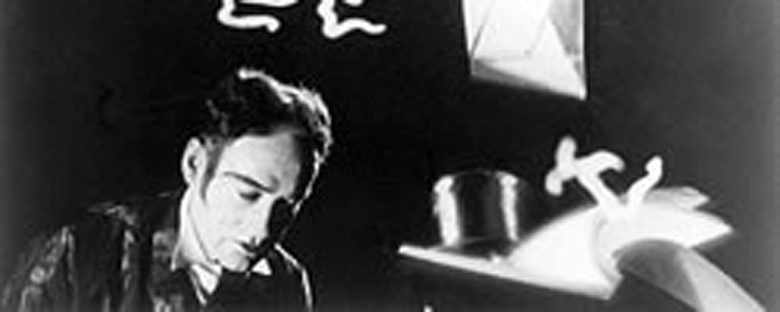Reviews
James Sibley Watson and Melville Webber
USA, 1928
Credits
Review by Matt Bailey
Posted on 14 October 2005
Source Image DVD (Treasures from American Film Archives)
Related articles
Features: 31 Days of Horror
I am a big fan of the Edgar Allan Poe story, “The Fall of the House of Usher,” and I am very fond of most of the film adaptations of it as well. It seems to be one of those pieces of source material that proves rather difficult to screw up. Oh sure, it’s been done—the 1988 version with Oliver Reed and Donald Pleasance was pretty hard to stomach, and I’m not so sure that the story is in the right hands with the upcoming adaptation starring an actor whose most notable credit is “Tall Stoner” in an episode of “Six Feet Under”—but it’s been done right more often than it’s been done wrong. It’s also simply been done a lot. When I try to tell people about my favorite adaptations of the story, I have the difficulty of explaining which of the dozens of versions I most admire. I make clear that I prefer the Roger Corman-directed version from 1960, but my next favorite is the older experimental version. No, the one from 1928. No, the other one from 1928. The one made by Watson and Webber. At this point, I’m either bleeding from my ears with frustration or, more likely, I have stopped being listened to. But those who are ignorant of Watson and Webber’s phantasmagoric short are truly missing out. Not only is it a textbook example of early American avant-garde filmmaking, it’s also pretty chilling.
The American filmmaking avant-garde got off to a much slower and more uneven start than its cohorts in Germany and France. Whereas those countries had tightly-knit groups of filmmakers so in tune with each other that we now consider them movements or schools, American filmmakers were pretty much on their own. I have neither the space nor the inclination to address the whole history of the American avant-garde in this review, but it remains an area ripe for rediscovery, particularly from those who think that German Expressionism was the last word in filmmaking that used oddball sets, superimpositions, and optical effects to spice up gothic narratives. Watson and Webber remain less known than their European contemporaries, and even less known than most other American avant-garde filmmakers of the 1920s, but their films are no less important, interesting, or beautiful.
Webber and Watson’s adaptation of Poe’s story is silent, but the rhythm of its editing and its stylistic filigrees make for a musical experience nonetheless. The story itself is stripped down to the barest essentials of plot—a stranger comes to visit a mysterious man who may or may not have buried his own sister alive—but the visuals tell an epic of shadowplay, ghostly apparitions, hallucinations, and murderous deeds. When sound would normally be called for—a scream, a heartbeat, a creaking coffin lid—Webber and Watson simply place the onomatopoetic word on the screen in a ghostly, undulating typeface. Sound is sublimated to the visual and even on-screen text becomes part of the horrific goings-on at the Usher place. The whole film is over in a mere thirteen minutes, but you can’t imagine anything essential from the story that might be missing or any image that might seem out of place in Poe’s strange world.
We don’t do comments anymore, but you may contact us here or find us on Twitter or Facebook.



